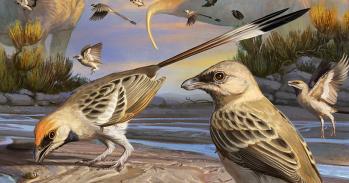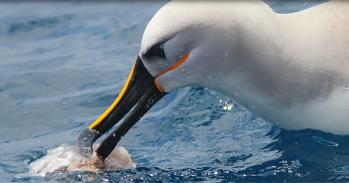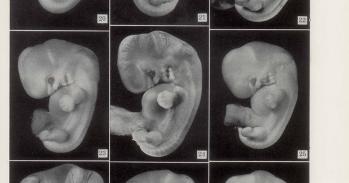As voyages of exploration opened up the world from the 15th century onwards, European culture delighted in encounters with exotic items. Dr José Ramón Marcaida, a visiting scholar at Cambridge University, shows how portrayals of the spectacular bird of paradise reflect the intersection between art and science.
As voyages of exploration opened up the world from the 15th century onwards, European culture delighted in encounters with exotic items. Dr José Ramón Marcaida, a visiting scholar at Cambridge University, shows how portrayals of the spectacular bird of paradise reflect the intersection between art and science.
Let me know if you spot a bird of paradise in an artwork anywhere around the world!
Dr José Ramón Marcaida
Veteran wildlife broadcaster David Attenborough is not often lost for words – but sometimes nature defies description. Seeking to put into words the extraordinary courtship dance of the bird of paradise, filmed deep in the forests of New Guinea for the BBC’s Natural World series, he struggled. Eventually he shook his head and uttered two words – “beautiful” and “bonkers” - to sum up the spectacular extremes of dance and display with which the male bird seeks to impresses a female.
When in the 15th and 16th centuries exploration began to bring the natural riches of the world across the oceans within the grasp of Europe’s social elites, there was much to marvel at and much to capture in words and images: unknown peoples and cultures, novel flora and fauna. Wild rumour and fevered speculation surrounded these exotic beings. Among them was the bird of paradise and its splendidly colourful plumage. There was an additional element to the allure of this most madly exotic of birds: it was said to have no legs and spend its entire life in flight.
The belief that birds of paradise were legless stemmed from the fact that the specimens of birds of paradise that reached Europe, from the 1520s onwards, had - in the process of being captured, stuffed and transported – literally lost their legs. For many decades the bird of paradise was portrayed in paintings as a heavenly being (manucodiata, the “bird of Gods”) circling overhead in permanent flight. It was only at the turn of the century that the bird of paradise was depicted with legs like other birds. And yet its symbolism would leave its mark on popular culture, to the extent that Carl Linnaeus named one of the species in the Paradisaea genus, the Paradisaea apoda, in reference to this remarkable feature.
Dr José Ramón Marcaida is a visiting scholar at Cambridge’s Department of History and Philosophy of Science. His background in physics and philosophy (he has degrees in both) has made him passionate about the dialogue between the arts and the sciences and his research focuses on the history of early modern science and its connection with European visual culture. While finishing his PhD and, more recently, working as a postdoctoral researcher, Dr Marcaida has become fascinated by images of the bird of paradise produced during the 16th and 17th centuries, a time when artists drew heavily on the exoticism that was entering public consciousness.
“The bird of paradise, and its part in the narrative of early modern natural history, is a small but captivating detail in the bigger picture of the interaction between the arts and sciences at a time of huge religious, political and social upheaval. As an historian of science working on the visual dimensions of knowledge I look at images published in books or illustrations produced on expeditions, but I also look at paintings in order to see how people made sense of the natural objects that they were encountering for the first time,” says Dr Marcaida.
“It is really exciting to see that when in the early 17th century Rubens painted and repainted the Prado version of the Adoration of the Magi, he showed the black magus with what is clearly a bird of paradise in his turban. You can even spot its head and beak. Its presence is symbolic of the exotic land from whence the visitor has come – and it’s a reference also to the trade in luxury goods that played a big part in the economy of the city of Antwerp, where the painting was created.”
The passing of time distances us from the ways in which the world was seen, and experienced, by those who came many centuries before us. Works of art by great painters such as Rubens, with their potent imagery and multi-layered story-telling, offer a pathway into that world that can be explored not just by art historians but also by historians of science.
Dr Marcaida says: “The history of science can learn a tremendous amount from the study of artworks exhibited in museums and galleries. And not just at an academic level: anyone interested in the history of knowledge can join in this collective enterprise and enjoy the wonders of studying a given work of art or genre, or searching for a certain scientific object or activity. Let me know if you spot a bird of paradise in an artwork anywhere around the world!”
This work is licensed under a Creative Commons Licence. If you use this content on your site please link back to this page.





